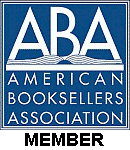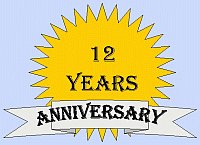Chris Grabenstein, whodunit mysteries, thrillers and young adult horror
by Steven Williams
 Chris Grabenstein was born in Buffalo, New York and moved to Chattanooga, Tennessee with his family when he was ten years old because of his father's job transfer. He grew up in Tennessee and also went on to college at the University of Tennessee in Knoxville where he graduated in 1977 with a journalism communications degree. At university he was equally involved in his writing and in his acting with the university's Clarence Brown Theatre. In 1979 he left Chattanooga for New York City where he became an improvisational comedian with a Greenwich Village comedy troupe in the early 1980s named The First Amendment Theatre. His comedy work was an evening gig done for the love of the work while he worked a day job as a typist in a bank to pay the rent. His enjoyment of improvisational acting is reflected in the fact that he still occasionally performs. After five years with the improv group, he was hired as a professional advertising writer based on his application to a Write If You Want Work Writing Aptitude Test printed as a full-page ad in The New York Times and created by James Patterson, at that time the Creative Director at J. Walter Thompson Advertising.
Chris Grabenstein was born in Buffalo, New York and moved to Chattanooga, Tennessee with his family when he was ten years old because of his father's job transfer. He grew up in Tennessee and also went on to college at the University of Tennessee in Knoxville where he graduated in 1977 with a journalism communications degree. At university he was equally involved in his writing and in his acting with the university's Clarence Brown Theatre. In 1979 he left Chattanooga for New York City where he became an improvisational comedian with a Greenwich Village comedy troupe in the early 1980s named The First Amendment Theatre. His comedy work was an evening gig done for the love of the work while he worked a day job as a typist in a bank to pay the rent. His enjoyment of improvisational acting is reflected in the fact that he still occasionally performs. After five years with the improv group, he was hired as a professional advertising writer based on his application to a Write If You Want Work Writing Aptitude Test printed as a full-page ad in The New York Times and created by James Patterson, at that time the Creative Director at J. Walter Thompson Advertising.  For the next seventeen years Grabenstein wrote commercials. His writing on the side during this period included screenplays, made-for-TV movies, and Muppet scripts. In 2001 he left his position as EVP/Group Creative Director at Young and Rubicam in New York to begin working on his first book.
For the next seventeen years Grabenstein wrote commercials. His writing on the side during this period included screenplays, made-for-TV movies, and Muppet scripts. In 2001 he left his position as EVP/Group Creative Director at Young and Rubicam in New York to begin working on his first book.
Grabenstein feels that the quality of his writing is in part, related to his earlier professional work in which writing thirty second TV spots required mini-stories that quickly developed immediate viewer interest and excitement. In addition to his professional writing in advertising, Grabenstein also gives significant credit for his decision to write mysteries based on his own enthusiastic consumption of mystery fiction. Once he decided to become a professional writer, he began writing screenplays. He eventually decided to turn his seventh screenplay idea into a novel. This manuscript was never sold but it was good enough for him to acquire a professional agent. His second attempt at a novel was eventually split off and developed into three more novel manuscripts. Eventually, he came up with an idea for a specific type of character for his primary detective as an ongoing character. At about the same period of in his development as a mystery writer he made a breakthrough, finally finding a 'true' narrator's 'voice' that worked for him.  At about the same time he also decided on the sort of mysteries he wanted to write. The end result of this flurry of development as a writer was Tilt-a-Whirl, his first published novel and a winner of the Anthony Award for Best First Mystery. Grabenstein is a disciplined writer, producing about 2,000 words each day. As an aid to his writing he also finds himself actually regularly returning to his skill, experience, and enjoyment of improvisational theater work by beginning most of his writing sessions with improvisational exercises. Grabenstein currently lives in Manhattan with his wife, their dog Fred, and their three cats, Jeanette, Parker, and Tiger Lilly. Fred has his own book coming out in June 2008 (Broadway Tails: Heartfelt Stories of Rescued Dogs Who Became Showbiz Superstars by Bill Berloni and Jim Hanrahan).
At about the same time he also decided on the sort of mysteries he wanted to write. The end result of this flurry of development as a writer was Tilt-a-Whirl, his first published novel and a winner of the Anthony Award for Best First Mystery. Grabenstein is a disciplined writer, producing about 2,000 words each day. As an aid to his writing he also finds himself actually regularly returning to his skill, experience, and enjoyment of improvisational theater work by beginning most of his writing sessions with improvisational exercises. Grabenstein currently lives in Manhattan with his wife, their dog Fred, and their three cats, Jeanette, Parker, and Tiger Lilly. Fred has his own book coming out in June 2008 (Broadway Tails: Heartfelt Stories of Rescued Dogs Who Became Showbiz Superstars by Bill Berloni and Jim Hanrahan).
 Tilt-a-Whirl: A John Ceepak Mystery (2005)
Tilt-a-Whirl: A John Ceepak Mystery (2005)
Grabenstein's first novel is a police procedural whodunit mystery with a seriocomic tone that introduces the two recurring characters of the series as a sort of Holmes-Watson pairing of police partners: the full-timer, a by-the-book Boy Scout with a rigid moral code and a part-timer, a young and a smart-alecky part-time cop who also provides the series' narrative voice. The story is set in the imaginary south Jersey seaside summer resort town of Sea Haven. John Ceepak, the full-time cop, is a former Army MP just back from Iraq and he takes his job very seriously, spending his spare time reading about forensics and watching true-crime television. His part-time cop partner, Danny Boyle, turns out to have very little in common with his partner except for their shared love for the music of Bruce Springsteen. In this first mystery of the series, the murder of a media-hungry real estate magnate at the town's seedy amusement park engages both men in the investigation. Tilt-a-Whirl is a winner of the Anthony Award for Best First Mystery and it also ended up on several 'Best Mysteries of 2005' lists.
 Mad Mouse: A John Ceepak Mystery (April, 2006)
Mad Mouse: A John Ceepak Mystery (April, 2006)
The second John Ceepak seriocomic mystery finds John and his partner Danny gearing up for the town's busy Labor Day weekend. Danny is expecting to be promoted to full time status and in the mean time has been seeing a local girl. Suddenly things turn very serious after a paintball barrage is aimed at Danny and his friends while they are hanging out at the beach. The perpetrator switches from paintballs to live ammunition in a second attack in which he severely wounds Danny's girlfriend and kills one of Danny’s friends. Whoever it is begins stalking Danny and the surviving group of beach buddies, all as part of an apparent madman’s scheme for revenge. The town's mayor puts pressure on the police department to find the killer as quickly as possible at the same time he tries to keep the story hush-hush. He is worried about scaring away tourist dollars. The two cops set out to discover the wannabe killer's identity, egged on by calling cards that the murderer leaves at the scene featuring Derek Jeter and comic book superheroes. The Kirkus Review named Mad Mouse one of the Ten Best Mysteries of 2006.
 Slay Ride: A Christopher Miller Holiday Thriller (September, 2006)
Slay Ride: A Christopher Miller Holiday Thriller (September, 2006)
Grabenstein's third novel is a thriller and introduces a new recurring character, Christopher Miller, and a new series. The main character is a middle-aged FBI legend and, two weeks before Christmas, he is hoping to finally be able to start spending more time with his family. This is not to be though. A successful young advertising executive complains about the manic driver provided for his limousine ride to the Newark airport by a car service out of Brooklyn. The unintended consequence is that the ex-driver becomes an avenging dark angel determined to wreck revenge on the man he holds responsible for ruining his life. He does this by kidnapping the man. The connection between the advertising exec and the FBI man comes about because of the coincidence that a serial killer has been killing cab drivers every full moon on the same section of Jersey shore where the ad exec's family lives. There ends up being a real connection beyond just coincidence when Miller discovers a money-laundering scheme operated out of the Brighton Beach area. The ex-limo driver stalker turns out to be ex-KGB and he had been working for a limousine service run by Brighton Beach Russian exile mafia. This novel is a marked departure from Grabenstein's previous books with much darker settings and brutal executions.
 Whack a Mole: A John Ceepak Mystery (May, 2007)
Whack a Mole: A John Ceepak Mystery (May, 2007)
The third John Ceepak novel by Grabenstein finds Ceepak and his partner in pursuit of a serial killer. Ceepak's hobby, using a metal detector to find things buried on the beach uncovers a class ring and then a charm bracelet. They peek his curiosity and further research reveals that the ring's owner not only has never visited the beachside town, but he actually gave the ring to his girlfriend just before she disappeared in the 1980s after her mother kicked her out of the house. Soon more jewelry is found on the beach and every piece that is identified is found to have belonged to a teenage girl who also went missing in the 1980s. Next a town character and member of the Sea Haven Treasure Hunters Society finds an old Tupperware box buried at the beach containing a skull, a name, and a picture of the girl whose skull it turns out to be. To top things off, the little-visited local history museum suddenly has additions to its exhibits in the form of ears and noses preserved in jars of formaldehyde. In the mean time, the two police partners are assigned patrol duty for a major sand castle construction competition being held in town this year. Unfortunately, the cushy assignment changes tone abruptly when the sandcastle building uncovers more boxes with skulls, pictures, and names of the dead girls. All the indications are that there is a long dormant serial killer living in town and the only real clue to an identity seems to be that each of the dead girl's first names has a biblical reference.
 Hell for the Holidays: A Christopher Miller Holiday Thriller (October, 2007)
Hell for the Holidays: A Christopher Miller Holiday Thriller (October, 2007)
Grabenstein's second Christopher Miller holiday thriller finds Miller coming up against a domestic White Supremacist hate group that is apparently copying Al Quaeda's tactics. Miller's investigation reveals that they have managed to smuggle a stinger missile into the country as well as recruit a trained army sniper. All indications are that they intend to destroy a passenger jet as it takes off from New York City's JFK airport. When Miller goes to his superiors at the regional FBI office with his conclusions, no one wants to hear it. The local FBI office is focused on foreign terrorists and the large Arab Muslim population living in Jersey City. Then Miller discovers that the homegrown terrorists are poised to strike on Thanksgiving Day in a perverted commemoration of God's supposedly giving the country to his 'chosen people', the whites. As the pace of Miller's pursuit of the wannabe killers accelerates, he finds himself encumbered by the added complication of trying to cope with his daughter's posttraumatic stress. After all, it has only been since the previous Christmas that a maniacal ex-KGB 'Santa' kidnapped the girl. As the clock ticks down the danger ratchets up when the white supremacist terrorist cell assigned to the airport attack takes a little independent initiative and decides that maybe a bigger splash can be made by a well-planned attack on the Macy's Thanksgiving Day parade.
 The Crossroads (May, 2008)
The Crossroads (May, 2008)
'The Crossroads' is Grabenstein's first of an intended series of young adult ghost stories. The main character, Zack, has just moved back to his father's hometown and into a 'new' old house with his Dad and his new stepmother. It turns out that the house harbors a dark secret though. Apparently fifty years earlier a crazed killer caused a terrible accident at a nearby crossroads that resulted in the deaths of almost forty people. Unfortunately for him, he was caught up in his own machinations and was killed in the same accident, but his evil spirit became trapped within an ancient tree that happened to be standing at the fatal crossroads. Zack is certain he can see a man's face hidden within the gnarly bark pattern on the tree. Uncertain of his father's reaction to his claim, Zach instead confides in a librarian at his school. It turns out that she actually has a graduate degree in Comparative Theology and she confirms that there are ancient beliefs that tormented souls can indeed become trapped within ancient trees. Then, during a huge storm, lightning hits the tree releasing the evil spirit of the mad killer.
 Hell Hole: A John Ceepak Mystery (July, 2008)
Hell Hole: A John Ceepak Mystery (July, 2008)
The fourth John Ceepak mystery puts Ceepak in a situation where everything is personal, too personal. It begins with an alleged suicide of an Army corporal recently back from a tour of duty in Iraq. Though the death appears to be an open-and-shut case of suicide because the body was found in a locked stall at a highway rest stop, the reality is not nearly so simple. Ceepak and his partner Boyle discover that it may not have been suicide after all. At the same time they come to this conclusion, they also uncover indications that this lowly corporal might actually have had access to some very sensitive information about a conspiracy. This information apparently seems to implicate some very powerful and, unfortunately for the two police partners, very unpleasant people.
 Mind Scrambler: A John Ceepak Mystery (June, 2009)
Mind Scrambler: A John Ceepak Mystery (June, 2009)
This is Grabenstein's fifth mystery featuring John Ceepak, an ultra-straight-arrow cop with a laid-back partner working the beat in Atlantic City. The story begins with Ceepak's partner meeting an old flame who is currently working as a nanny for the children of a master illusionist. They plan to meet later because she wants to ask his advice about something. Before they can meet though, she is found bound, gagged, wearing fetish gear, and dead. The case turns out to involve some professional illusionists who apparently have some nasty secrets they want to keep hidden. One murder seems to lead to another and evidence starts to show up that both torture and pedophilia might be involved.
 The Hanging Hill (August, 2009)
The Hanging Hill (August, 2009)
This is Grabenstein's second young adult horror novel and is a sequel to his first, The Crossroads. Like the first book, this story is filled with a mix of haunting creepiness tempered by humor. The two main characters from The Crossroads, Zack and his stepmother Judy are back in a story about ritual murder committed in order to acquire magical power. The two are rehearsing for a musical play titled Curiosity Cat and based on Judy's bestselling children's book series. Zack still has his ability to see ghosts and the setting is perfect for that. The performance is being held in The Hanging Hill Playhouse, a building with a dark history. A series of mysterious ghosts appear and other strange happenings send Zack and a female actor his own age looking around in the creepy old building. Little do they know that the director of the musical is more than a little nuts and has become fascinated with necromancy. He is actually intending to use Zach for a human sacrifice in order to raise a swarm of evil ghosts up from the dead.
Resources
Chris Grabenstein
Chris Grabenstein at MWA
Chris Grabenstein interview
another Chris Grabenstein interview

Home
Older Article: Beer Bread, a bronze age flavor variation with other ideas

Chris Grabenstein, whodunit mysteries, thrillers and young adult horror by Steven Williams is licensed under a Creative Commons Attribution-Noncommercial-No Derivative Works 3.0 United States License.
Permissions beyond the scope of this license may be available by contacting Steven Williams through Bookmarc's BookmarcsOnline.
















































